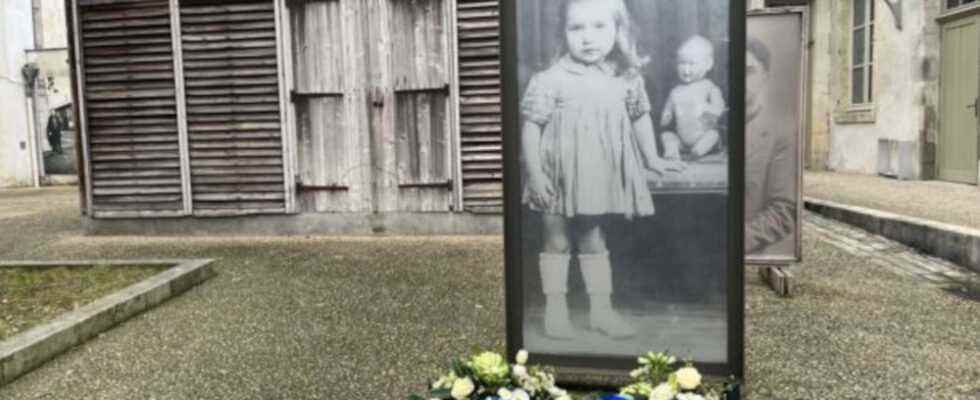Exhibitions, books and unpublished testimonies bring new revelations about July 16 and 17, 1942. Days of shame, when 13,152 Jews, including more than 4,000 children, were arrested in Paris and its close suburbs to be deported to Auschwitz. The 3rd Reich demanded 40,000 of them of working age, the Vichy government also delivered the children that Germany did not claim. An operation that remained unknown for a long time in the detail of its organization, its logistics and the extent of its horror.
1. When Cabu designed the Rafle du Vel d’Hiv: unprecedented exhibition at the Shoah Memorial In 1967, on the occasion of the publication of the book by Claude Lévy and Paul Tillard, “La Grande Rafle du Vel d’Hiv”, Cabu, a young press cartoonist, put all his talent to illustrate this tragedy and also summoned his memories. The building was destroyed in 1959 as part of a major real estate operation, but he had already visited it in 1948. That year, Jean Cabut, known as Cabu, had just won a drawing competition and the prize, a bicycle, must be given to him in this sports arena, a major place for cycling races. He will even be entitled to a lap.
Read also: Roundup of the Vél’ d’Hiv: 80 years after the horror, survivors testify
At 10, he doesn’t know what happened there 6 years earlier, but he memorizes everything. For Laurent Joly, historian specializing in Vichy and curator of the exhibition: in his drawings, “the bias is brilliant, to center everything on the victims facing the executioners, to show this isolation, this distress. It is extremely successful. Véronique Cabut, the designer’s widow, knew she had a historical treasure. “Precious relics” according to Laurent Joly. Sixteen drawings on display recreate the street scenes and atmosphere of the Vél d’Hiv. They fill in a way “this deficiency of images of the arrests of Jews from 1942.” Only one photo of the roundup is known to date, that of the Parisian buses parked along the facade of the Vélodrome.
Cabu, drawings from the Vel d’Hiv roundup. Until Monday, November 7. Shoah Memorial. 17, rue Geoffroy-L’Asnier in Paris (4th arrondissement). Such. 01.42.77.44.72. Every day from 10 a.m. to 6 p.m. Late opening until 10 p.m. on Thursday.
The Book: “Cabu, the roundup of Vel d’Hiv”, Tallandier edition
©
2. At the Vel d’Hiv Children’s Memorial Museum: 2 days of commemoration
Among the 11,000 Jewish children deported from France, 4,000 were deported from Loiret, from the camps of Pithiviers and Beaune-la-Rolande. Separated from their mothers, some have no identity, too small to say their name, or having, for fun, exchanged the label put around their neck. In Orleans, the Cercil, Memorial of the children of Vel d’Hiv, installed since 2000 in a former nursery school, traces the fate of children rounded up and then interned before their deportation. In the center of the courtyard, the larger-than-life photo of little Aline, murdered in Auschwitz on her 3rd birthday, embodies them all: “It’s the soul of the Cercil” for Hélène Mouchard-Zay, founder of the Research Center. His life’s work. The daughter of Jean Zay, Minister of National Education of Léon Blum, imprisoned by Vichy and assassinated by the militia in 44, felt the absolute urgency to bring the history of children out of oblivion. “The 1990 desecration of the Carpentras Jewish cemetery was a shock to my generation. Then there was the article in L’Express on the Loiret camps. The time had come to tell this story. »
16 and 17 July: guided tour, screening of the documentary “The Vel d’Hiv roundup, shame and tears”, meeting with the historian, Laurent Joly.
The Cercil is an institution under the aegis of the Shoah Memorial
www.musee-memorial-cercil.fr
3. Pithiviers station, a new place of memory inaugurated on July 17 Rounded up by the French police then detained for several days at the Vel d’Hiv in atrocious conditions, the Jewish mothers and children will then be transported to two internment camps in Loiret, 80 kilometers south of Paris, awaiting deportation. In Pithiviers and Beaune-La-Rolande, these prefabricated camps held until July 1942 men, fathers, husbands, arrested a year earlier on the so-called “green ticket summons”. They will all be deported, some via Drancy, to make room for the families of Vel d’Hiv, sometimes even their wives and children. It is there that, in heartbreaking scenes, reported by witnesses, social workers, children extirpated from hell, the children will be separated from their mothers, to be deported from the latter, between July 31 and August 7. Germany not having given the transport order for the thousands of children, the little martyrs will remain alone and almost left to their own devices, in the distress that one imagines, for weeks. Before taking their turn, alone, in the direction of Auschwitz, from which none will return. Abandoned in 1969, the station has become a new museum, a place of memory and transmission of the history of the camps and the thousands of victims who walked on its platforms.
Free visit. Information: 0238729202
